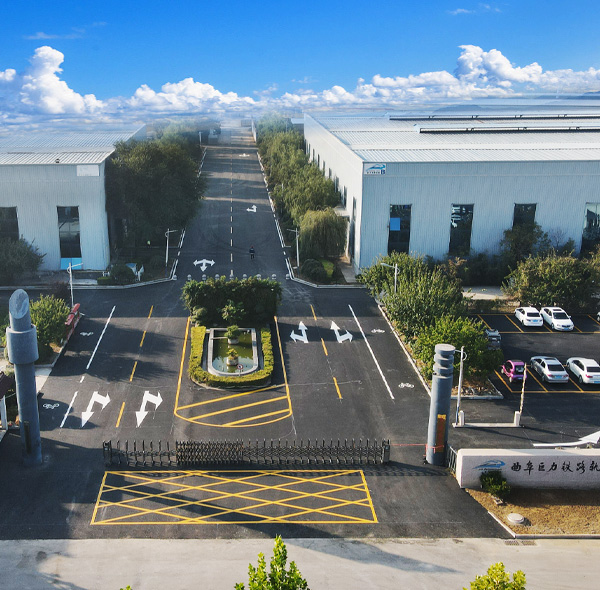Mold cleaning process
Clean the concrete slag or impurities on the end and sides of the demolded mold, and spray the diluted isolation agent in a mist from the nozzle evenly on the surface of the steel mold.
Qufu Juli Railway Track Engineering Co., Ltd
Qufu Juli Railway Track Engineering Co., Ltd. was founded in 2001.
Located at the southern end of Chuangye Avenue in Taiwan Industrial Park, eastern Qufu. Located to the east of the Beijing Shanghai high-speed railway, to the south of the Ridong expressway, to the west of the Jingfu expressway, and to the north of the intersection of National Highways 104 and 327, it enjoys a prime geographical location. The factory covers an area of over 200 acres, with a building area of over 30000 square meters and 350 sets of various mechanical and power equipment. The total value of fixed assets is over 80 million yuan, with 212 employees and 29 professional and technical personnel, including 4 with senior technical titles, 12 with intermediate technical titles, and 13 with junior technical titles. There are 48 intermediate professional and technical workers, and a five department one room management system has been established under the senior management of the chairman, general manager, deputy general manager, and chief engineer.
Our company has received unanimous praise from multiple units such as China Railway First, Third, Ninth, Eleventh, Fourteenth, Seventeenth, Nineteenth, Twentieth, Twenty Fourth Bureau, Bridge Bureau, Tunnel Bureau, Zhongshui, and Zhongtu for the railway sleeper molds with speeds of 120, 200, 250, 300, and 350 kilometers per hour and the new steel molds jointly developed with the Ministry of Railways for 15 consecutive years. We have participated in cooperation in national key projects such as the Qinghai Tibet Railway, Beijing Shenyang Railway, Harbin Dalian Railway, Beijing Shanghai Central South Corridor, and Jiaozhou Jinan Railway. In China's international support for railway construction in Asia and Africa, we have provided rail sleeper production lines, mold manufacturing, installation, and technical guidance for Myanmar, South Africa, Angola, Ethiopia, and Kenya. In 2013, our company collaborated with Beijing Jiaotong University to jointly develop the country's first RPC concrete ball joint, which was approved by expert review. Our company has become a well-known and excellent enterprise in the domestic railway industry, specializing in the manufacturing of molds and non-standard equipment with strong influence.
With the rapid development and production demand of China's railways, our company's rail sleeper production line keeps up with the pace of the times and industry demands, constantly optimizing. Our company's production line for rail sleepers using the assembly line method has been used by multiple rail sleeper production enterprises in China for many years. It is a set of mature rail sleeper production line equipment with high efficiency and low failure rate. Our company has established its own rail sleeper production plant using this production equipment, and our rail sleeper products have obtained a production license from the General Administration of Quality Supervision, Ltd. of China.

We are not only a manufacturer of production line equipment and molds, but also a manufacturer of rail sleeper products. We use our own manufactured equipment to produce rail sleepers, and provide molds for other rail sleeper manufacturers nationwide. Therefore, our company has become an enterprise that integrates mold making, rail sleeper production line making, and rail sleeper production. Our company has established a technology department with over a hundred patents. Our senior engineers in the company can real-time monitor the operation of the rail sleeper production equipment. After years of research and practice, we have developed an operating system for rail sleeper equipment production. Our company has successfully completed turnkey projects in Nigeria, Ethiopia, Shandong CRRC in China, China Railway 15th Bureau, and others, enabling the output of the entire production line.
Our company's rail sleeper production line using the assembly line method is convenient for achieving mechanization and specialization in production. When the product types change, the production line can be flexibly adjusted, making it suitable for producing various specifications of concrete rail sleeper products, such as; Domestic railway sleeper models (IIIA type) Type IIIC Type XII IIIQa type IIIQc type Fork pillow Subway sleeper Double pillow Wide pillow The production line can also produce cement prefabricated square piles, railway guardrails, railway cover plates, and so on Wait for diversified cement products.
At present, the people of Juli are building a beautiful new Juli with full enthusiasm, new pursuits, keeping pace with the times, exploring and innovating. In 2015, our company jointly invested 30 million yuan in Beijing to build a domestically advanced rail sleeper production line and established Qufu Rongbang Transportation Rail Technology Co., Ltd. The company mainly produces general sleepers such as New II type sleepers, IIIa type sleepers, and New III type bridge sleepers, as well as III type sleepers for passenger dedicated lines, IIIPC type bridge sleepers, general line switch sleepers, and various sleepers for urban subways and light rail tracks. At present, all products produced meet the standards and are qualified. Some products have been sold to Beijing, Tianjin, Shijiazhuang, Lianyungang, Mongolia and other places, and have received unanimous praise from customers.
Integrity / Professionalism / Innovation / Win-Win